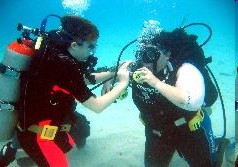Yes, all the time. The real question is “are they a danger to SCUBA divers?”
The most common, or plentiful, shark in the Atlantic only grows to a length of 4-5 feet (more commonly seen at 3 ft). They are called sand sharks or bouncy castle for sale Spiny Dogfish. They can be seen around the wrecks either alone, or in small groups. Are they a threat? No. I don’t believe there has ever been an unprovoked attack on humans.
| [singlepic=113,400,300,,left] |
| Cute little shark. |
Do we see other sharks? Yes, but far less frequently. Further off shore we will occasionally see basking sharks. These are filter feeders, and no threat, but with their large size, they startle you at first. Other divers have reported seeing Blue sharks, and Mako sharks.
Some things to keep in mind. The incidence of shark attacks on divers is very low. Most shark attacks are in shallow water in the surf zone (beach), with limited visibility. Most divers are in deeper water, with good visibility. In recorded history, there have been only a hand full of attacks in New Jersey. None of these have been on divers.
 This is a another common question along with: How do you learn to dive? How long does it take?
This is a another common question along with: How do you learn to dive? How long does it take?